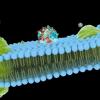That said, we disagree about how much we already know... We've disagreed about that for a while... Disagreement is a good thing.
-------------
Figure 2 shows Fullerene C60s in macrophages in the spleen. There is a voluminous scientific literature about macrophages in mammals, including humans. What we know, from Figure 2 of the Baati study, is that any Complete Explanation will involve some kind of Explanation of those Fullerenes shown in the macrophages. This is not so simple a thing...
And it's a big data point. Don't you think? If you don't agree that's a big data point, then, make the argument that we should ignore it...
You've insisted, at least a couple times now, that the science of Fullerenes is incompletely understood, And I agree that it is. But I have not understood that you were arguing that Fullerene C60s magically changed all the known and published science about macrophages, I mean, specifically, their essential functions and detailed activity...
I don't believe in that kind of magic. And it turned out Version 1 of my JAC Explanation couldn't survive serious reflection about the meaning of that Figure 2 data point... So... my Round 1 Version got knocked out...
We'll soon see if the other two Round 1 Contending Explanations can survive the Figure 2 Evidence Test as is. I don't think they can. And I'm going to try to make the case that they can't survive it as is. Sure, they can be adapted, get broader, and grow, just as I intend to grow the JAC Version 1 Explanation... I hope they can survive it. I want them to survive it. I'm going to steal components of the other 2 contending Explanations and integrate them into the JAC Round 2 Explanation.
I think this game is fun to play...
Edited by wccaguy, 24 June 2012 - 04:22 AM.























































